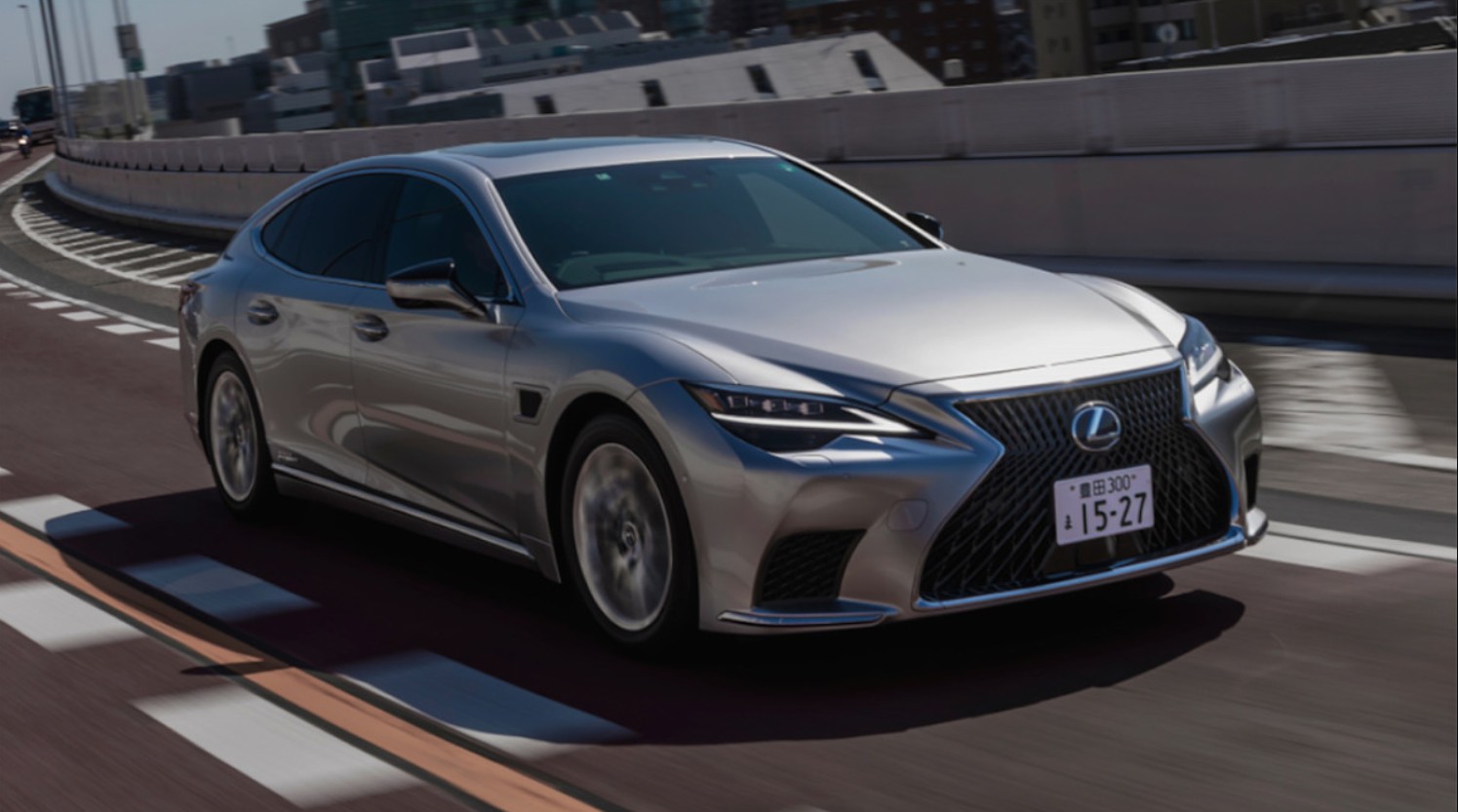Self-driving technology is changing the way we experience cars. What once seemed like a futuristic dream is now a reality, with advanced driver-assistance systems making driving safer and more convenient.
While fully autonomous cars are still in development, many vehicles today come equipped with impressive self-driving features that reduce driver effort and enhance safety.
These features use cameras, sensors, and artificial intelligence to help cars navigate traffic, avoid obstacles, and even park themselves.
Automakers are constantly improving these systems, making them more reliable and accessible to everyday drivers. Some of these technologies are already standard in modern vehicles, while others are available as optional upgrades.
From adaptive cruise control to hands-free highway driving, these innovations are making road trips and daily commutes easier than ever. Whether you’re looking for better safety, reduced fatigue, or just a more comfortable driving experience, these self-driving features are worth considering.
7) Toyota and Lexus Teammate, Advanced Driver Assistance for Safer Roads
Toyota and Lexus have developed an advanced driver-assistance system called Teammate, which offers semi-autonomous driving features.
It falls under SAE Level 2 automation, meaning it still requires driver supervision. This technology is designed to make driving safer and more convenient by assisting with steering, acceleration, and braking on highways.
Teammate is currently available as a standard feature on the Lexus LS500h and was previously offered on the Toyota Mirai. It uses a combination of cameras, radar, and lidar to detect road conditions and surrounding traffic. These sensors help the system operate smoothly, ensuring a safer driving experience.
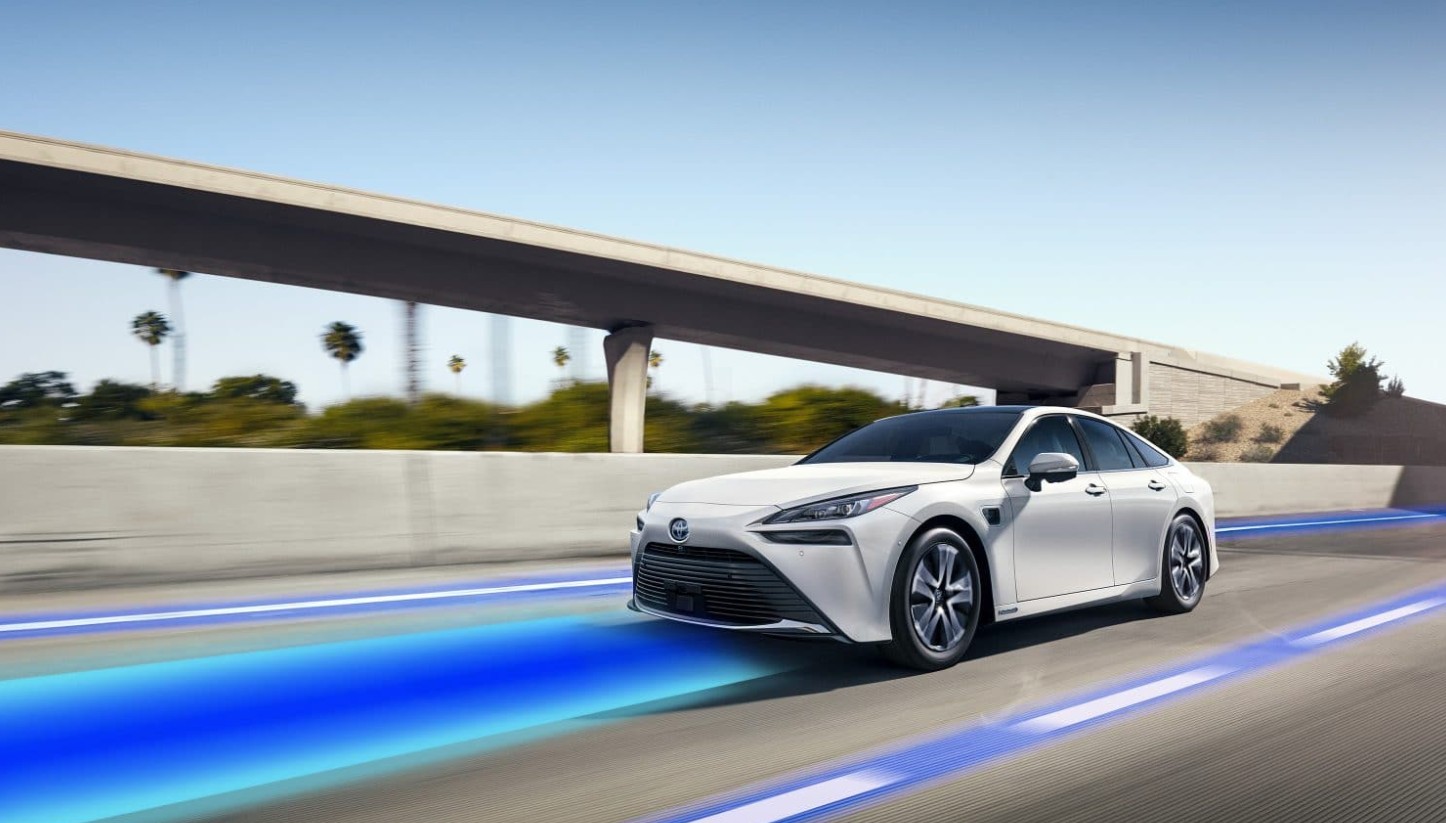
One of the key aspects of Teammate is its ability to function on 145,000 miles of highways and roads across the United States. This makes it a valuable tool for long-distance travel, reducing driver fatigue while maintaining control over the vehicle.
To ensure safety, Teammate includes a driver monitoring system. A camera on the steering column and a steering torque sensor check whether the driver is paying attention. This prevents misuse and ensures the driver is always ready to take control if necessary.
A standout feature of this system is the awareness view, which enhances the driver’s understanding of their surroundings.
It also includes an on-demand lane change feature, which prompts the driver to check their blind spot by turning their head before changing lanes. The system requires hands-on steering, reinforcing driver engagement.
Teammates can operate at speeds of up to 85 mph, making it useful for highway driving. While it automates many driving tasks, it still requires human input for key decisions, ensuring that the driver remains in control of the vehicle at all times.
Also read:23 Most Dangerous Cars Ever Sold to People With High Fatal Accident Rates
Unlike some self-driving technologies that come at an extra cost, Teammate’s hardware is included in the price of the vehicle. Additionally, Toyota and Lexus offer 10 years of service for free, making it a cost-effective option for drivers looking for advanced assistance features.
Self-driving technology continues to, and Teammate represents a major step forward in making roads safer and driving more convenient. While it’s not fully autonomous, it provides valuable assistance that enhances comfort and safety, especially for long highway journeys.
As Toyota and Lexus refine their self-driving capabilities, systems like Teammate bring us closer to a future where cars can handle more driving tasks on their own. For now, it serves as an excellent tool for reducing stress and improving the driving experience without taking away the driver’s responsibility.
6) Nissan and Infiniti ProPilot Assist 2.X, Smarter Driving with Advanced Assistance
Nissan and Infiniti offer an advanced driver-assistance system called ProPilot Assist 2.X. This technology enhances driving safety and convenience by assisting with steering, acceleration, and braking on highways. It is classified as an SAE Level 2 system, meaning the driver must remain attentive and keep their hands on the wheel.
ProPilot Assist 2.0 is available on the Nissan Ariya, while the upgraded version, ProPilot Assist 2.1, is offered on the Nissan Armada, Rogue, and Infiniti QX80. These systems are designed to help reduce driver fatigue on long journeys by automating some driving tasks while still requiring human supervision.
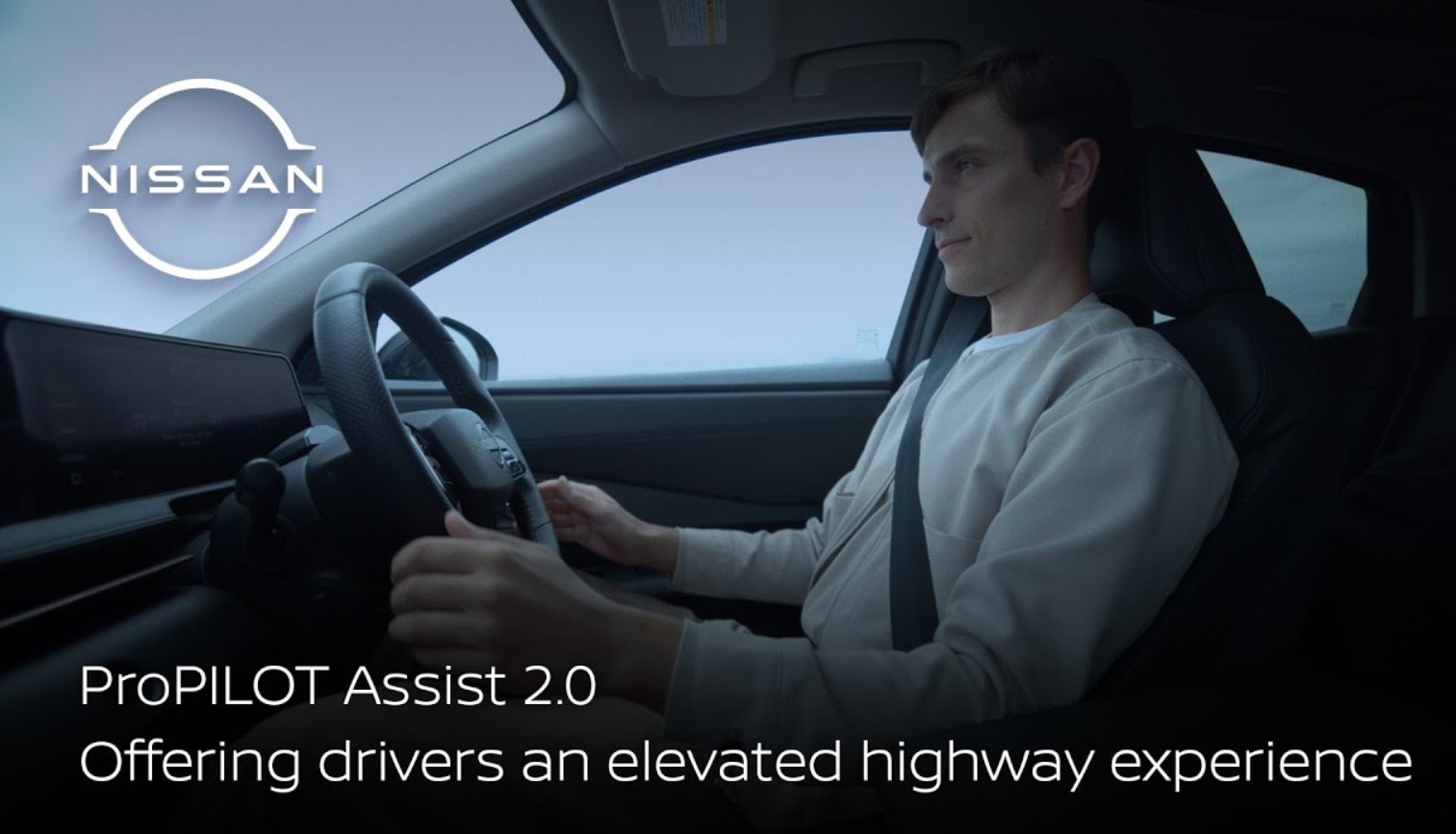
The system operates using cameras and radar to monitor road conditions and surrounding vehicles. It can function at speeds of up to 85 mph, making it ideal for highway driving. By continuously analyzing traffic and lane markings, ProPilot Assist 2.X ensures smooth driving while maintaining a safe distance from other vehicles.
One of its key features is on-demand lane change assistance. When the driver activates the turn signal, the system helps execute lane changes safely. However, the driver must keep their hands on the steering wheel and remain engaged, ensuring they are always in control.
Another important feature is Route Assist, which works with the car’s navigation system. When active, it alerts the driver when to change lanes or exit a highway based on the selected route. This helps reduce missed exits and ensures smoother highway transitions.
ProPilot Assist 2.X is compatible with 200,000 miles of mapped highways in the U.S. and also works on divided highways in Canada. This wide coverage makes it a useful tool for both everyday commuting and long-distance travel.
To ensure driver attention, the system includes a camera on the steering column that monitors the driver’s face. Additionally, a capacitive sensor on the steering wheel detects if the driver’s hands are on the wheel. These safety measures help prevent misuse and keep the driver engaged in the driving process.
The cost of ProPilot Assist 2.X hardware depends on the vehicle model and trim. In some cases, it is included as a standard feature, while in others, it comes as part of an optional package. Service pricing includes three years of free access, after which a subscription is required for high-definition map updates.
As self-driving technology continues to improve, systems like ProPilot Assist 2.X bring us closer to a future where cars can handle more driving tasks. While it does not make a vehicle fully autonomous, it provides valuable assistance that makes highway driving safer, more comfortable, and less stressful.
5) Mercedes-Benz Drive Pilot, A Step Closer to Fully Autonomous Driving
Mercedes-Benz Drive Pilot is an advanced self-driving system designed to enhance comfort and safety on the road. It is one of the first SAE Level 3 systems available, meaning it can handle certain driving tasks without driver input. However, the driver must be ready to take control if needed.
Drive Pilot is currently available on the EQS sedan and S-Class models sold in California and Nevada. It allows hands-free driving on major freeways in these regions. Unlike Level 2 systems, which require constant driver supervision, Drive Pilot can take full control in specific conditions.
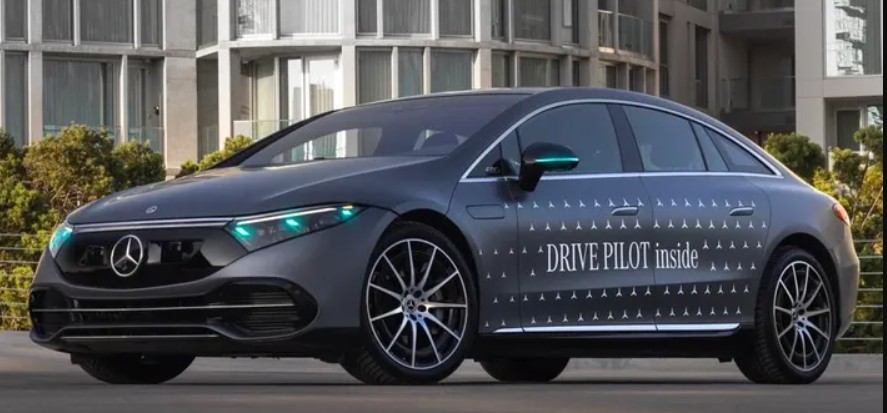
One limitation of the system is its speed. Drive Pilot operates at a maximum of 40 mph, making it useful in heavy traffic or stop-and-go conditions. This helps reduce driver fatigue during slow-moving commutes, allowing them to relax while the car handles acceleration, braking, and steering.
The system uses multiple sensors, including cameras, radar, lidar, ultrasonic sensors, and even road moisture detection. This extensive sensor setup ensures accurate monitoring of road conditions, traffic, and potential hazards, making Drive Pilot one of the most advanced self-driving systems available today.
To keep the driver engaged, the system includes a monitoring camera above the driver display. Even though Drive Pilot can control the car, the driver must remain alert and be ready to take over when required. This ensures safety while allowing for a more comfortable driving experience.
Drive Pilot includes several notable features, such as awareness view and automatic lane changes. It can also perform on-demand lane changes when prompted by the driver. These capabilities help create a smooth and efficient driving experience, especially on busy highways.
Also read:General Motors Reports Record Revenue Despite EV Slowdown
Unlike some self-driving features that come at no extra cost, Drive Pilot requires a paid subscription. Mercedes-Benz charges $2,500 per year for the service. While this may be expensive, it provides access to cutting-edge self-driving technology that makes driving easier and more enjoyable.
Mercedes-Benz has big plans for the future of Drive Pilot. The company aims to expand the system’s capabilities to work at speeds of up to 80 mph. To achieve this, they plan to add extra sensor redundancy, ensuring even greater safety and reliability at higher speeds.
As self-driving technology continues, Drive Pilot represents a major step forward. It offers the future of autonomous driving, where cars can take over more responsibilities while ensuring driver safety. Though limited to certain areas and conditions, it is one of the most advanced systems available today.
4) Jeep and Ram Hands-Free Active Driving Assist, A Smarter Way to Drive
Jeep and Ram offer an advanced driver-assistance system called Hands-Free Active Driving Assist. This technology provides semi-autonomous driving features, making long highway trips safer and more comfortable. It is classified as an SAE Level 2 system, meaning the driver must stay attentive and be ready to take control at all times.
The system is available on the Jeep Grand Cherokee L and the Ram 1500. It allows hands-free driving on mapped highways, reducing driver fatigue on long journeys. With a maximum operating speed of 90 mph, it is one of the fastest hands-free systems available today, making it ideal for highway driving.
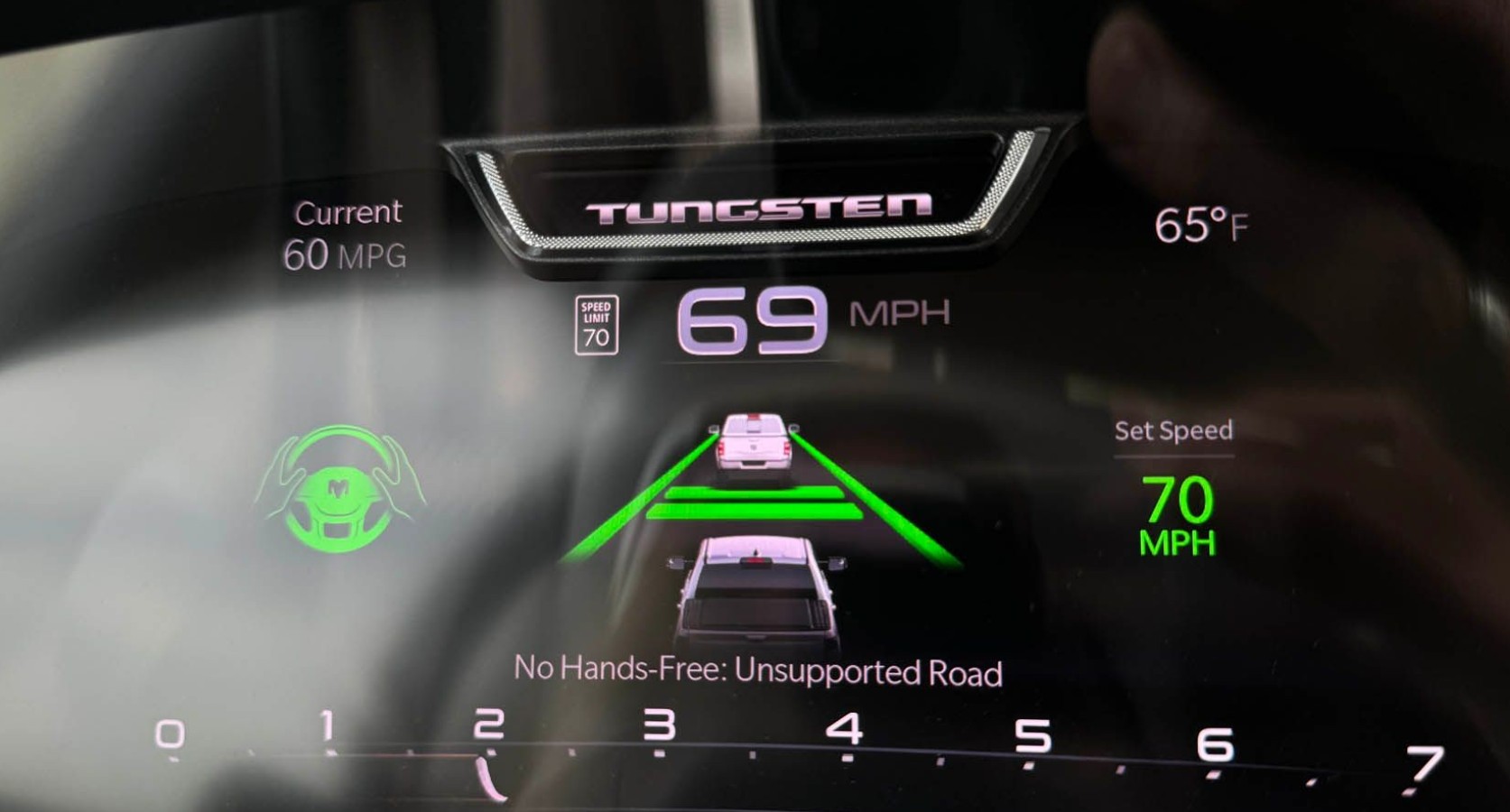
Hands-Free Active Driving Assist relies on cameras and radar to monitor the road and traffic conditions. These sensors allow the vehicle to maintain lane positioning, control speed, and keep a safe distance from other vehicles. This helps provide a smoother and more relaxing driving experience.
To ensure driver engagement, the system includes a camera on the steering column and sensors on the steering wheel. These features monitor the driver’s attention, ensuring they remain focused on the road even when using hands-free mode. If the system detects inattention, it will prompt the driver to take back control.
One of the standout features of this system is an on-demand lane change. When the driver activates the turn signal, the vehicle assists in changing lanes smoothly and safely. Additionally, the system uses maps to enhance navigation and provide a more precise driving experience on supported highways.
The system works on 125,000 miles of mapped roads across the United States and Canada. This wide coverage makes it a valuable tool for drivers who frequently travel long distances and want to reduce the stress of highway driving.
Pricing for Hands-Free Active Driving Assist depends on the vehicle model. For the Jeep Grand Cherokee L, it is a $2,995 option available on the Overland 4×4 and Summit 4×4 trims. On the Ram 1500, the system is included with certain trims. Buyers should check their specific model to see if the feature is available.
Service pricing includes three years of free access. After this period, drivers must subscribe to a paid plan to continue using the system, including map updates and hands-free functionality. This subscription model is similar to other advanced driver-assistance systems.
Jeep and Ram’s Hands-Free Active Driving Assist represents a significant step toward more automated driving. While it does not replace human control, it provides valuable assistance for highway travel, making driving safer and more convenient. As technology improves, we can expect even more advancements in hands-free driving features.
3) GM Super Cruise, A Hands-Free Driving Revolution
General Motors (GM) offers one of the most advanced driver-assistance systems available today—Super Cruise.
This hands-free driving technology is classified as SAE Level 2, meaning it can handle some driving tasks but still requires the driver to stay alert. It is designed to improve safety, reduce driver fatigue, and make highway driving more convenient.
Super Cruise is available on a wide range of GM vehicles, including models from Cadillac, Buick, Chevrolet, and GMC. It is currently offered on vehicles like the Cadillac Escalade, Chevrolet Silverado, GMC Sierra, and Buick Enclave. GM also plans to introduce it on upcoming models like the Cadillac Escalade IQ and Optiq.
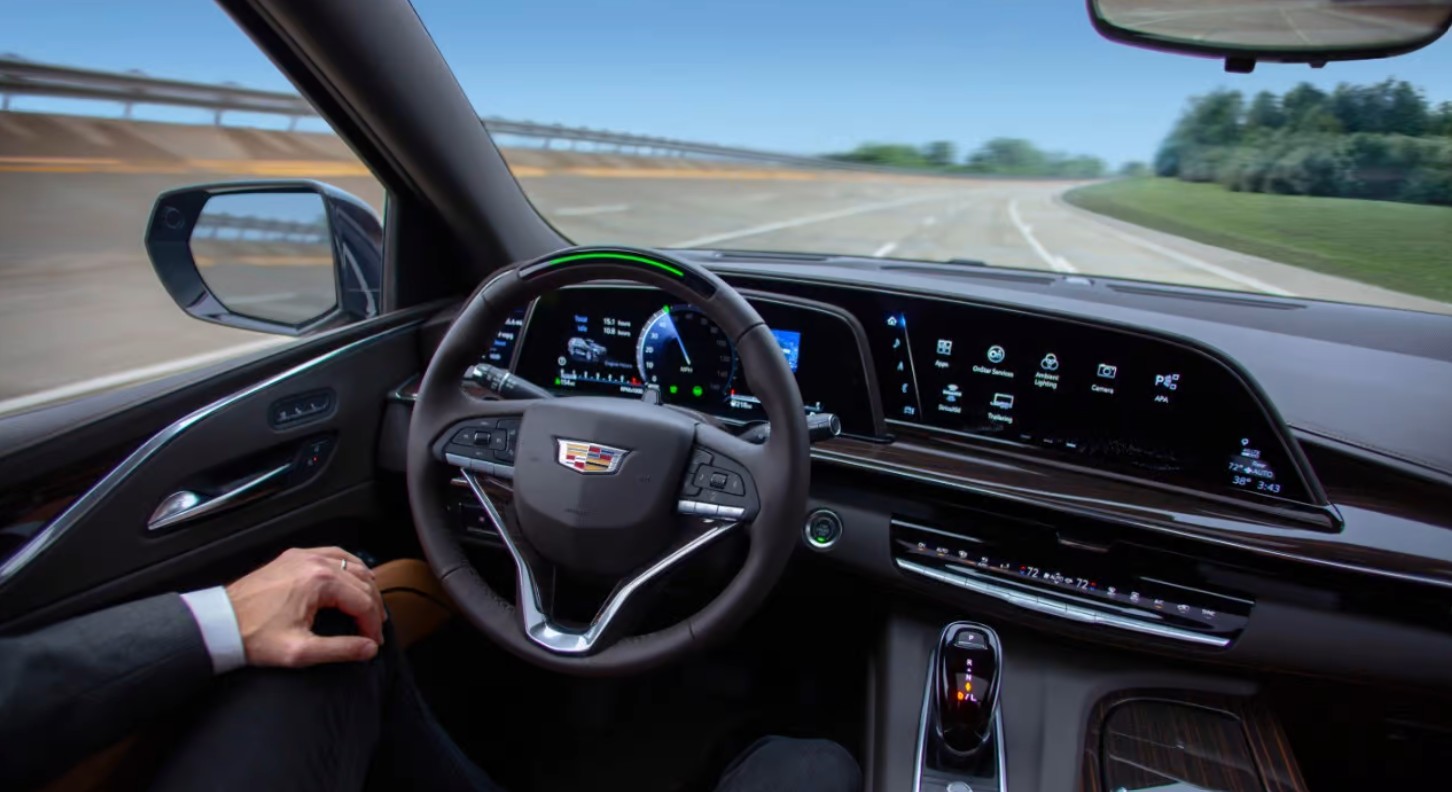
One of the standout features of Super Cruise is its extensive coverage. It works on over 400,000 miles of divided and non-divided highways across the U.S. and Canada. Unlike most other hands-free systems that only operate on highways with clear lane dividers, Super Cruise can also function on certain undivided roads.
The system uses a combination of cameras, infrared LEDs, and radar to monitor the road and surrounding traffic. Additionally, it relies on previously mapped lidar data, which is stored in the vehicle. This allows for highly precise lane positioning and smooth driving performance.
To ensure driver awareness, Super Cruise includes a monitoring camera and infrared LEDs on the steering column. These features track the driver’s attention, ensuring they remain engaged even when the system is active. If the driver looks away for too long, the system issues a warning.
Super Cruise offers several key features, including automatic lane changes and on-demand lane changes. When the driver signals, the vehicle can change lanes on its own. It also includes a unique trailering feature, making towing a trailer easier by maintaining stability and assisting with highway driving.
Also read:10 Abandoned Supercars Found in the USA That Are Selling For A Fortune
Pricing for Super Cruise varies by brand. On Cadillac vehicles, it costs $2,500, while on Buick models, it ranges from $3,255 to $3,730 as part of a larger package. For Chevrolet and GMC vehicles, the system is priced at $2,200. This makes it one of the more affordable hands-free driving systems on the market.
Super Cruise includes three years of free service. After that, drivers must pay $25 per month or $250 per year to continue using the system. This subscription covers updates and ensures access to new improvements over time.
GM had originally planned to launch an even more advanced system called Ultra Cruise, featuring over 20 sensors, including lidar. However, the company has since decided to keep future enhancements under the Super Cruise brand. This suggests that GM will continue refining and expanding its hands-free driving capabilities.
2) Ford and Lincoln BlueCruise, Hands-Free Driving for a Smoother Ride
Ford and Lincoln offer an advanced driver-assistance system called BlueCruise. This technology allows for hands-free driving on specific highways, making long-distance travel safer and more comfortable. It is classified as SAE Level 2, meaning it can assist with driving but still requires the driver to stay alert and ready to take over.
BlueCruise is available on several Ford and Lincoln models, including the Ford F-150, F-150 Lightning, Mustang Mach-E, and Expedition. Lincoln models with this feature include the Aviator, Corsair, Nautilus, and Navigator. These vehicles benefit from advanced technology that makes highway driving easier.
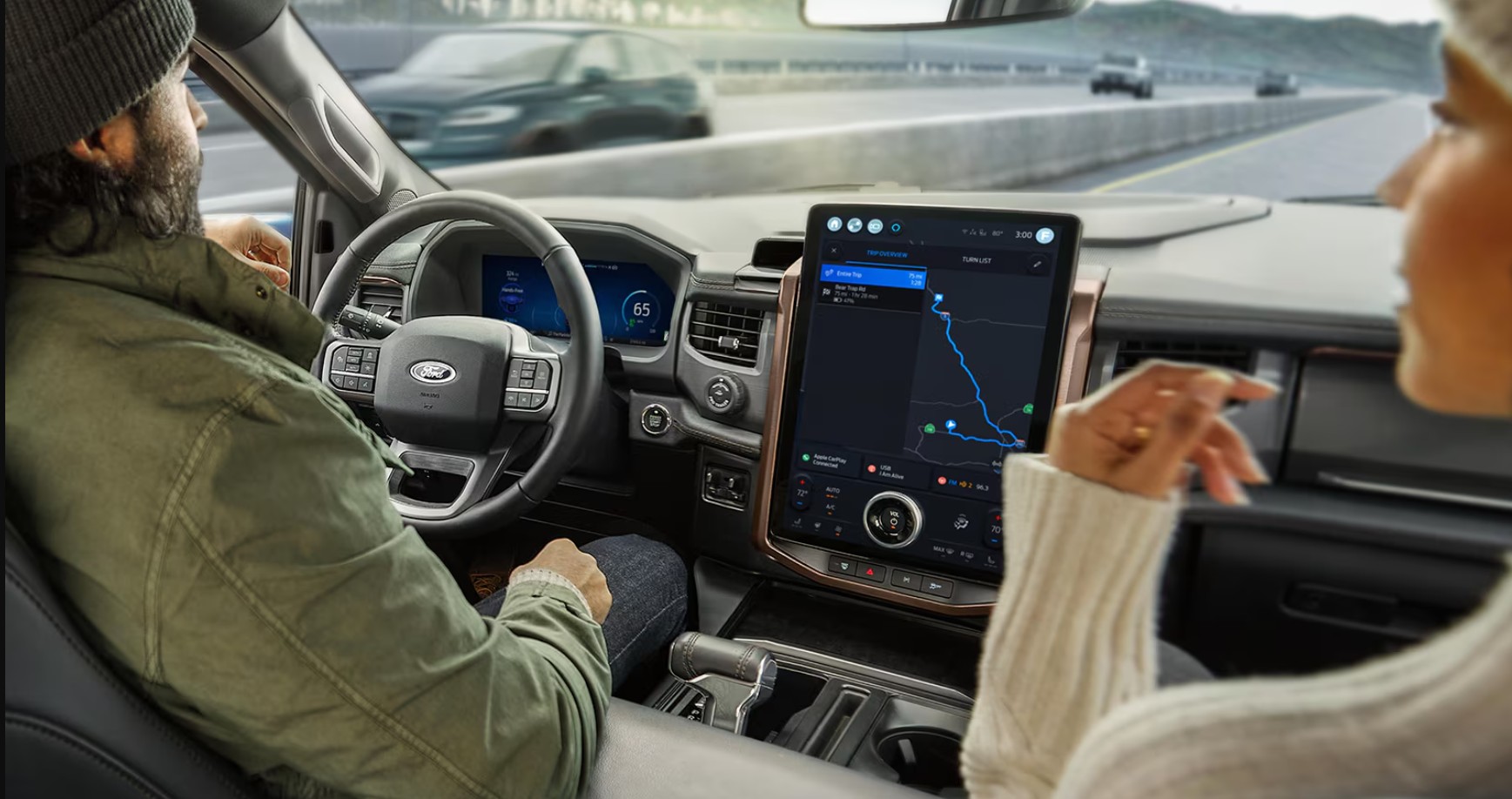
The system is designed to work on 130,000 miles of mapped, divided highways in the U.S. and Canada. These mapped roads, often referred to as “Blue Zones,” allow the vehicle to operate in hands-free mode while maintaining a safe speed and lane position. This helps reduce driver fatigue on long trips.
To function effectively, BlueCruise uses cameras and radar to monitor the road and surrounding vehicles. It also includes an infrared driver-monitoring camera located on the steering column, above the in-vehicle screen, or on the door pillar. This ensures that the driver remains attentive while using the system.
One of the notable features of BlueCruise is on-demand lane change. With version 1.2 and newer, the system includes Lane Change Assist, which can suggest a lane change. Once the driver activates the turn signal and conditions are safe, the vehicle will automatically change lanes. This enhances safety and convenience on highways.
Unlike some other driver-assistance systems, BlueCruise does not require an additional hardware purchase. It comes included with certain trim levels of Ford and Lincoln vehicles. However, using the system beyond an initial trial period requires a subscription.
For 2025 Ford models, a one-year plan is either included or available for $495 at the time of vehicle purchase. A one-time purchase option of $2,495 is available for those who prefer to pay upfront.
If no plan is selected, a 90-day trial is included, after which users can subscribe for $495 per year or $49.99 per month. Lincoln offers four years of BlueCruise service as a standard feature on most trims.
Ford is actively working on improving its self-driving technology. Through its Latitude AI subsidiary, the company is developing Level 3 automation, which could allow vehicles to take on even more driving responsibilities in the future. This suggests that BlueCruise will continue to with new features.
With its hands-free capabilities, lane-changing assistance, and widespread availability, BlueCruise is one of the most accessible driver-assistance systems today. It provides a smoother, more relaxing driving experience while maintaining safety and driver engagement.
1) BMW Highway Assistant, A Smarter Way to Travel
BMW offers an advanced driver-assistance system called Highway Assistant, designed to make highway driving easier and more comfortable. It is classified as an SAE Level 2 system, meaning it can assist with certain driving tasks but still requires the driver to stay alert and ready to take control when needed.
Highway Assistant comes standard on high-end BMW models like the XM and Alpina XB7. It is also available on other premium models, including the 5-Series, 7-Series, i5, i7, iX, X5, X6, and X7. These luxury vehicles benefit from cutting-edge technology that enhances the driving experience.
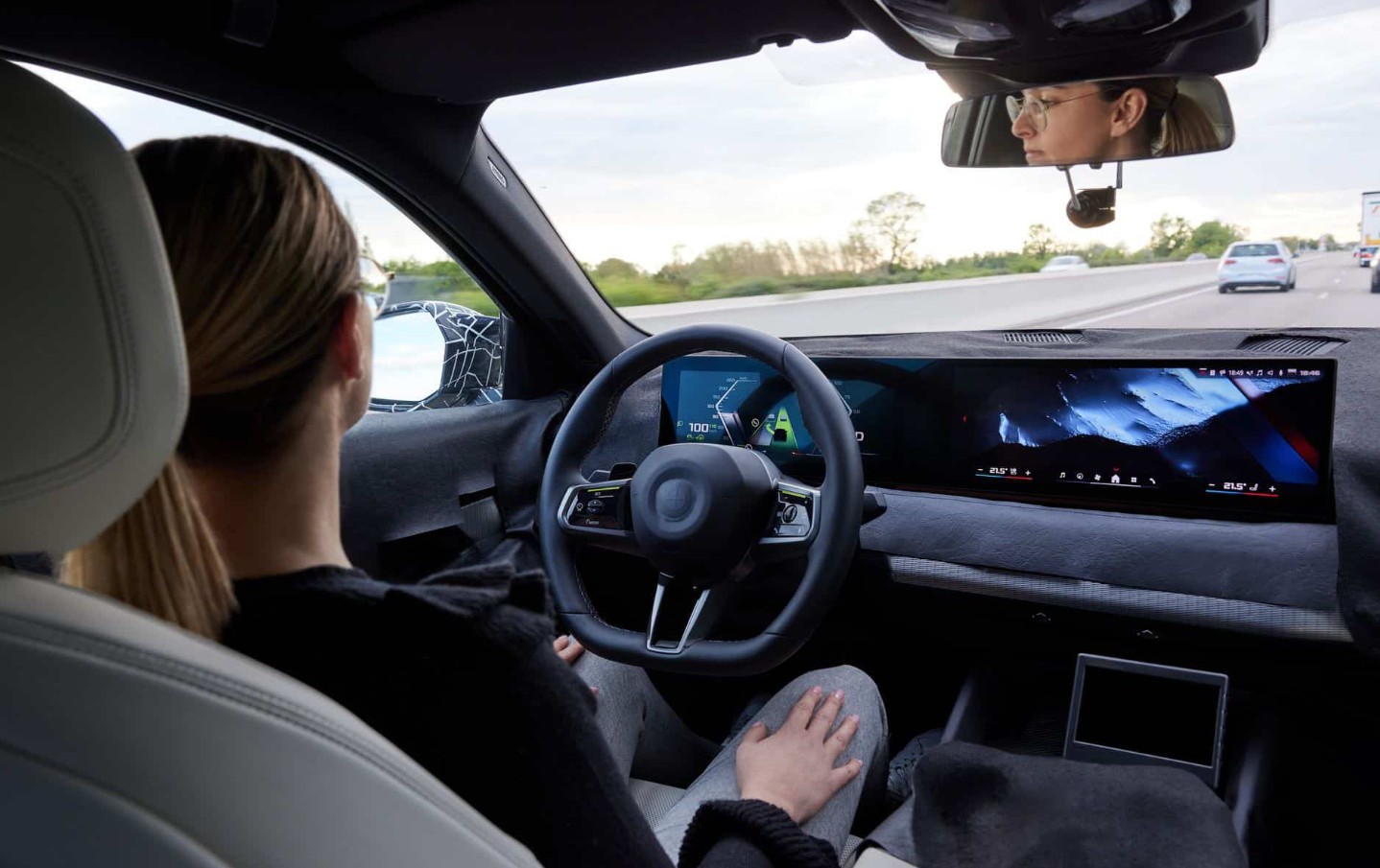
The system is designed to work on 130,000 miles of divided highways in the U.S. and Canada. However, it is not available in Alaska, Hawaii, Puerto Rico, or Guam. On supported highways, the system allows for hands-free driving while ensuring the driver remains attentive.
BMW Highway Assistant uses a combination of sensors, including a front camera and both full-range and short-range radar. These sensors help the vehicle monitor its surroundings, maintain lane position, adjust speed, and respond to traffic conditions effectively.
To ensure driver engagement, BMW includes a monitoring camera in the instrument cluster. This camera tracks the driver’s attention, ensuring they are looking at the road while using the system. If the driver becomes distracted, the system will prompt them to regain focus.
Also read:15 Cars with the Highest Survival Rates in a Crash and the Best Safety Features for 2025
One of the most notable features of BMW Highway Assistant is its advanced lane-changing capability. The system includes an Active Lane Change feature that allows the driver to confirm a suggested lane change simply by looking in the direction of the new lane. This hands-free method adds convenience while maintaining safety.
Alternatively, the driver can also initiate a lane change using the turn signal stalk. The system will then check for safe conditions and assist in changing lanes smoothly. This feature enhances both safety and ease of highway driving.
BMW includes Highway Assistant as part of its Driving Assistance Professional package. This means that there is no additional hardware cost for buyers who choose a trim level with this package. The system is integrated into the vehicle’s high-tech driver-assistance suite.
One advantage of BMW’s system is its long service duration. Highway Assistant includes eight years of free service, after which users can renew access by paying an annual fee. This makes it one of the most generous driver-assistance offerings in terms of long-term value.
Looking ahead, BMW has developed a Level 3 system called Personal Pilot L3, currently available only in Germany. Due to U.S. regulations, BMW does not plan to bring this system to American markets in the near future. Instead, the company will continue refining its Level 2 Highway Assistant for enhanced driving support.
BMW Highway Assistant is an impressive blend of luxury and innovation. With hands-free capabilities, eye-activated lane changes, and a long free-service period, it offers a seamless and convenient driving experience for those who frequently travel on highways.

